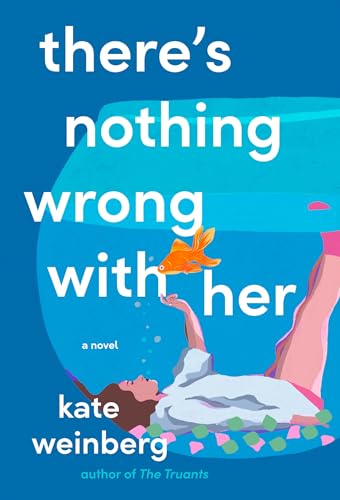
Author: Kate Weinberg
Genre: Literary Fiction / Magical Realism / Mental Health / Invisible Illness
Ideal For: Readers drawn to off‑beat narratives, compelling inner lives, magic‑tinged realism, and unflinching honesty about chronic pain
Why I Picked It Up
Weinberg’s novel has generated buzz for good reason: slim yet emotionally robust, it tackles long COVID–style chronic illness through wit, surreal touches, and intimate psychic landscapes. It’s been hailed by Sarah Jessica Parker and Kiley Reid as “painfully funny” and “vast in emotional impact”. Curious how fantasy and chronic illness might coexist narratively, I dove in—and was hooked by its inventive tenderness.
Plot Summary (Spoiler-Free)
Vita Woods lives in a subterranean flat in London, trapped in “The Pit”: a semiconsciousness fuelled by crushing fatigue, pain, and existential desolation. Diagnosed with nothing, even her surgeon boyfriend Max can’t help. Into her dark world drift spectral visitors: sixteenth‑century poet-soldier Luigi da Porto, offering romantic counsel, and Mrs. Rothwell with her lodger Jesse, the curious neighbours upstairs. As Vita grapples with loss, identity, and her creative dreams, she begins to question: Does the illness define her—or is she defining the illness?
Why It Resonates
Inventive Interior Realism
Weinberg turns Vita’s consciousness into a textured world. The Pit becomes a setting: memory, pain, humour, and hallucination mingle, allowing language to stretch and fragment—like “f a t” raindrops on the page. Vita’s thoughts turn snapshot‑surreal with goldfish named Whitney Houston, dead poets, and shifting walls of consciousness. It’s immersive and brave.
Illness as Character, Not Metaphor
This is not a redemption arc for suffering; the illness isn’t a metaphor—it is Vita’s reality. Weinberg challenges readers to sit with a condition without closure. The rage at medical dismissal—“medicine… can’t measure or heal it”—rings painfully true to many readers of chronic illness memoirs.
Humour Tied to Grief and Play
Despite heavy themes, the novel is often remarkably funny. Vita’s deadpan observations—about podcasts on trauma, her sister Gracie’s sarcasm, and Max’s clinical detachment—break through despair. The dialogue with Luigi is oddly cheeky, teasing at both healing and farce.
Supporting Cast as Light and Catalyst
Mrs. Rothwell and Jesse offer Vita her first glimpses of alternative closeness. Their gentle warmth and Vita’s risky, rule-breaking trips upstairs feel both naive and revolutionary in a world fenced by illness. Gracie—her sister—provides grounding sardonic love. Together, these relationships stir small but real openings into daylight.
Compact Structure, Rich Themes
At roughly 256 pages, the novel feels slender but universal. It grapples with grief (family losses), the commodification of trauma (Vita’s podcast), memory, and rapprochement with self. One review compares it to Charlotte Perkins Gilman’s The Yellow Wallpaper, and for good reason: both highlight the prison of the body and mind.
Where It Falters Slightly
Emotional Weight vs. Momentum
Like me, you may find Vita’s descent into The Pit repetitive. Scenes occasionally loop or linger without progression, mirroring her mental state—but at times that interior echo can slow narrative momentum.
Magic vs. Medicine Balance
Moments of surrealism—like abstracted text or poetic interludes—are compelling, but occasionally feel overstylised compared to core sincerity.
You’ll Love This Book If You Enjoy…
- Autumn by Liz Jensen — for dreamlike illness narratives
- Exit West by Mohsin Hamid — for boundary-crossing surreal realism
- The Yellow Wallpaper for claustrophobic psychological realism
- Daisy Jones & The Six or Wonderland for fragmented memory‑driven storytelling
Personal Highlights
- Vita’s “Pit” immersion: Detailed, visceral pain with language that trembles, falters, and occasionally snaps into clarity.
- Luigi da Porto’s appearances: A blend of whimsical ghost and emotional anchor—stirring Vita to question memory, longing, and creation.
- The upstairs neighbours: Mrs. Rothwell and Jesse feel like the faint outline of a door opening—a possible life beyond isolation.
- Podcast critique: Vita hosts “Confessions”, churning trauma into content—Weinberg sharply unpacks the exploitative underbelly of making stories into jobs.
- Gracie-Wita dynamics: Their wry, sibling bond feels real and grounding—Gracie as survival cheerleader and tender psychologist.
Final Thoughts: Quiet, Intelligent, Bittersweet
There’s Nothing Wrong With Her is a haunting, humane portrait of chronic illness rendered with lyricism, wit, and courage. Weinberg doesn’t solve Vita’s suffering—but invites readers to experience it, to find tenderness in fragments of memory, laughter, and connection.
It’s a four-star work not because it lacks power, but because its narrative dips sometimes into ambiguity without closure. Still, its emotional clarity, surreal imagination, and unflinching honesty make it a memorable read.
This novel doesn’t cure; it simply honours. Vita’s journey reminds us that invisible suffering can still illuminate invisible brilliance—and that companionship, real or imagined, can help carry us toward daylight.


